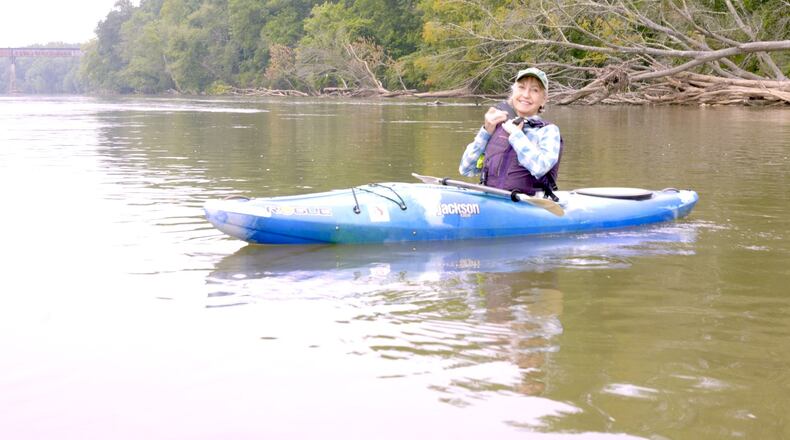Atlantans may not know it, but the city owes women a debt of gratitude for not letting the metro area slide into a hellscape of toxic effluence.
“Saving the Chattahoochee,” a new documentary film from Hal Jacobs, celebrates the women behind the effort to save the city’s neglected waterway, a river that has been alternately ignored or treated as an open-air toilet.
The two stars of the 42-minute film, which premieres Wednesday, Jan. 31, at the Tara Theatre, are former Riverkeeper Sally Bethea and former Mayor Shirley Franklin.
Bethea and her organization filed the federal lawsuit that finally forced the city to change its filthy ways. (She has just published a memoir of that time: “Keeping the Chattahoochee.”) Franklin saw to it that the city complied with the resulting federal consent decree, using her political capital to fix Atlanta’s broken sewer system.
Previous administrations, obsessed with the upcoming Olympic Games, had fought tooth and nail to avoid the $2 billion cost of cleaning up Atlanta’s water. “Who wants to fix sewers when you have to deal with the Olympics and other big ticket items?” said Jacobs.
It helped that Franklin was single-mindedly focused on sewers, said Jacobs, “and she wasn’t trying to run for senator, though she should have.”
While these two are the focus, they’re not the only women who looked after Atlanta’s rivers. The film points out that these women had female predecessors, including the women of the Junior League, led by Katherine “Kay” McKenzie.
McKenzie helped organize the Friends of the River, creating a coalition of river rats, homeowners, builders and politicians who fought a sewer line project that would have destroyed the gorgeous Palisades area. She then pushed state legislators to pass the Metropolitan River Protection Act, so that such poorly planned projects would be vetted more effectively.
Credit: Saving the Chattahoochee
Credit: Saving the Chattahoochee
McKenzie and her colleagues had the support of Gov. Jimmy Carter, who can be seen in 1971 news footage picking his way through a devastated Chattahoochee riverbank, decrying the erosion caused by heedless developers.
In news footage shot seven years laters, we see President Jimmy Carter signing the Chattahoochee River National Recreation Area bill creating a 48-mile protected park on that same riverbank.
The film also catches up with the women who have protected other metro rivers. They include Hannah Palmer, who has led efforts to improve the Flint River, and Jacqueline Echols, of the South River Watershed Alliance.
Credit: Saving the Chattahoochee
Credit: Saving the Chattahoochee
Jacobs said it’s not an accident that women have been a driving force behind these conservation efforts. “They are the ones drawn to nurturing, caring for the environment and for the family.”
The film demonstrates that the effort to save the Chattahoochee received assistance from some unusual sources.
One group of supporters coalesced around the Ramblin’ Raft Race, a hedonistic event invented by a Georgia Tech student in the late 1960s. It drew hundreds of thousands of participants, who rode inner tubes, drank beer, and saw this beautiful urban waterway in an Edenic moment before development began to ruin it.
Their shenanigans earned the enmity of landowners who were happy to seal off public access to the river, but the race created a host of future conservationists, who went on to provide support when the battle to save the river went to the court of public opinion.
The film was made possible with seed money from the Georgia Humanities and with support from the University of Georgia Special Collections.
Jacobs spent days digging through the UGA archives, finding footage of the river race, and a wonderful still photo of Jimmy Carter jumping off Diving Rock.
EVENT PREVIEW
“Saving the Chattahoochee”
Premiering 7 p.m. Wednesday, Jan. 31. $15. Tara Theater, 2345 Cheshire Bridge Rd. NE. Following the film will be a discussion with Sally Bethea, Shirley Franklin, and Hal Jacobs. For information and tickets, go to hjacobscreative.com/savingchattahoochee.
About the Author
The Latest
Featured





